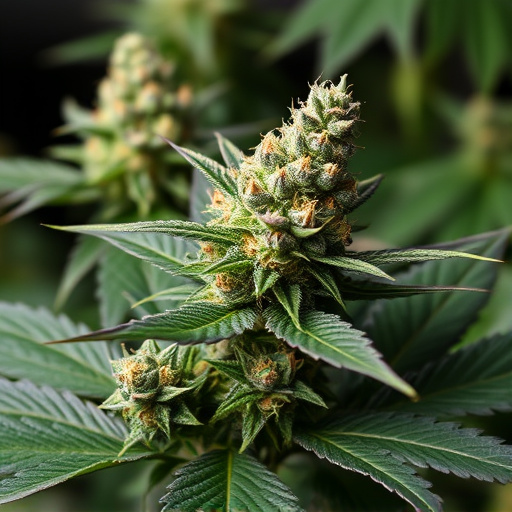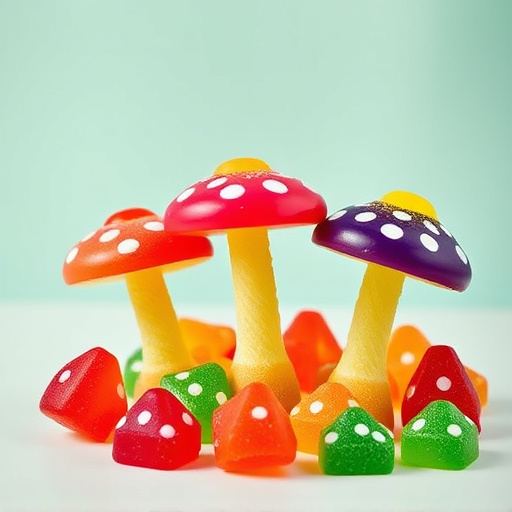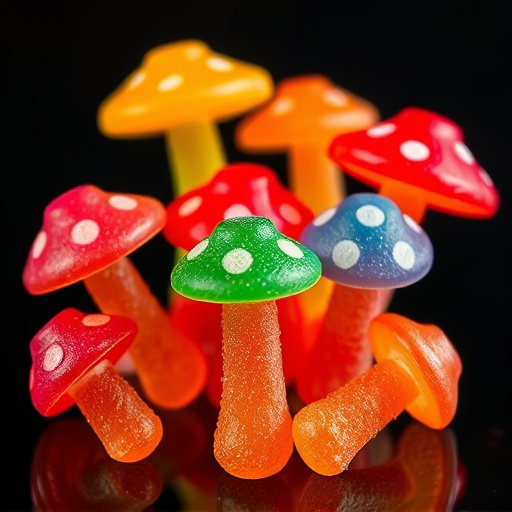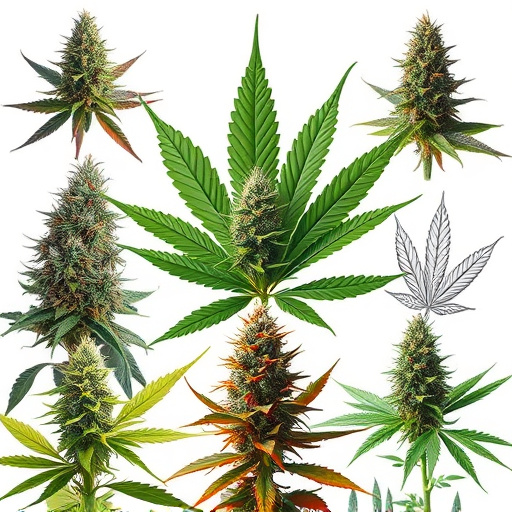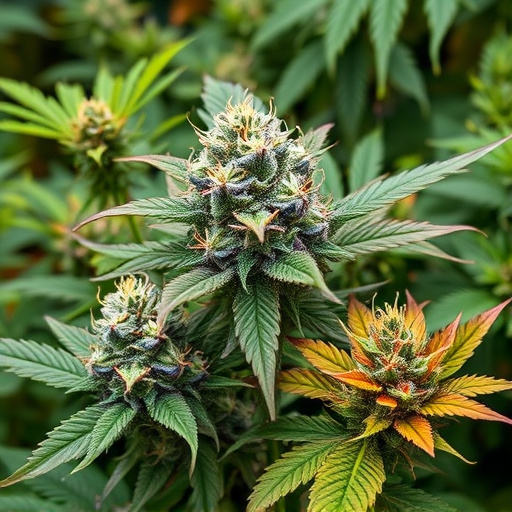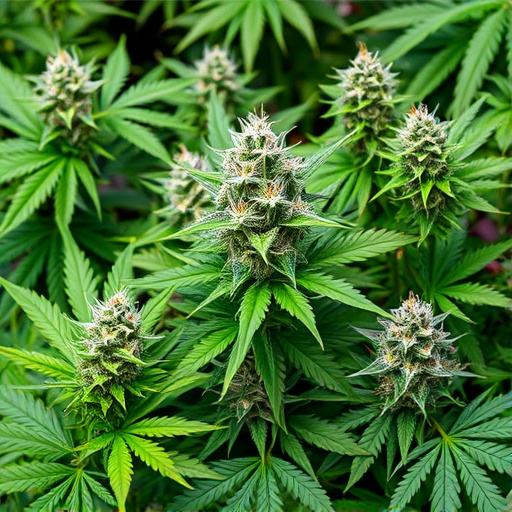Cannabis flowers' unique qualities stem from their complex blend of terpenes, cannabinoids, and other compounds, with each strain offering a distinct terpene signature that impacts aroma, taste, and effects. Different cannabis strains vary in THC and CBD content—THC causes intoxication, while CBD offers potential therapeutic benefits. Terpenes interact with cannabinoids to enhance the overall experience through the "entourage effect." Strain diversity ensures a broad spectrum of sensory and physiological effects, empowering consumers to choose varieties tailored to their desired experiences or therapeutic needs. Understanding different cannabis strains is crucial for unlocking the full medicinal potential of the plant.
Discover what sets high-quality cannabis flowers apart with our comprehensive guide. Understanding the intricate characteristics of cannabis flowers is key, from terpene profiles to cannabinoid content. Explore how strain diversity plays a pivotal role in determining quality, as each variety offers unique medicinal and recreational properties. Delve into the crucial factors beyond strain, ensuring optimal profiles for maximum efficacy and pleasure. Uncover the secrets behind the best cannabis strains available today.
- Understanding Cannabis Flower Characteristics
- The Role of Strain Diversity in Quality
- Key Factors Beyond Strain: Ensuring Optimal Cannabinoid Profile and Terpene Content
Understanding Cannabis Flower Characteristics

Cannabis flowers, also known as buds, are a complex blend of terpenes, cannabinoids, and other compounds that contribute to their unique characteristics. Understanding these floral attributes is key when discerning high-quality cannabis. Different cannabis strains exhibit varying levels of THC (tetrahydrocannabinol), the primary psychoactive compound responsible for the plant’s intoxicating effects. CBD (cannabidiol) content is also a significant factor, as it offers potential therapeutic benefits without the psychotropic properties.
Beyond cannabinoids, the terpene profile plays a crucial role in shaping the flower’s aroma, flavor, and even its potential medicinal properties. Terpenes are aromatic compounds that occur naturally in cannabis and other plants, and their interaction with cannabinoids creates what is known as the “entourage effect,” enhancing the overall experience and therapeutic value of the plant material. Different strains boast distinct terpene signatures, leading to a wide array of sensory and physiological effects.
The Role of Strain Diversity in Quality
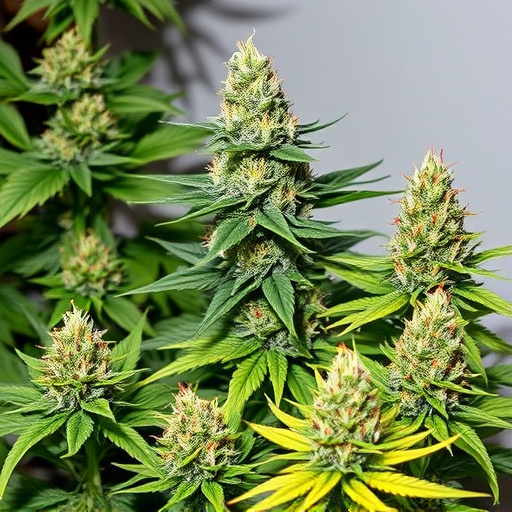
Cannabis flower quality isn’t just about the plant’s genetic makeup; it’s also deeply tied to strain diversity. Different cannabis strains offer unique profiles of cannabinoids and terpenes, compounds responsible for the plant’s distinct aromas, flavors, and effects. This variability allows consumers to choose varieties that best suit their preferences and desired outcomes, be it relaxation, energy, or pain relief.
Strain diversity plays a crucial role in enhancing overall quality by providing options for tailored experiences. Moreover, the complexity of terpene profiles contributes to the plant’s medicinal value, as these compounds interact with cannabinoids to modulate their effects. As such, exploring and understanding various cannabis strains is key to unlocking the full potential of this versatile plant.
Key Factors Beyond Strain: Ensuring Optimal Cannabinoid Profile and Terpene Content
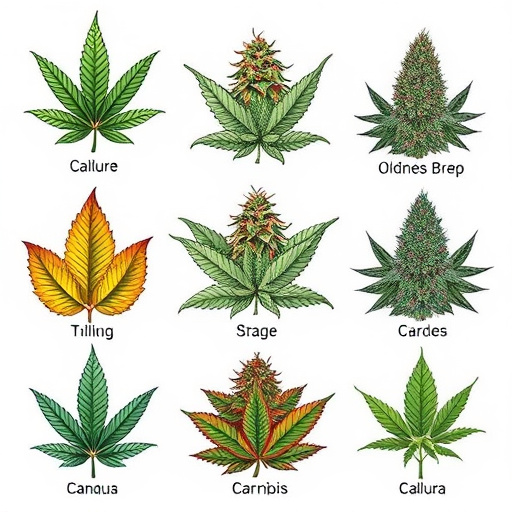
Beyond the well-known influence of strain on cannabis quality, several other key factors play a crucial role in determining the optimal cannabinoid and terpene profile. Cannabinoids like THC and CBD are responsible for the plant’s psychoactive and medicinal properties, respectively, making their ratios critical. High-quality cannabis often boasts a balanced or specific cannabinoid profile tailored to desired effects.
Terpenes, aromatic compounds contributing to cannabis’ unique scents and flavors, also significantly impact the overall experience. Different terpenes offer distinct aromas and potential therapeutic benefits. A well-crafted cannabis flower will exhibit a harmonious blend of cannabinoids and terpenes, enhancing both the sensory appeal and medicinal value. This combination ultimately ensures a more pleasant, effective, and targeted consumption experience across various different cannabis strains.
When evaluating high-quality cannabis flowers, it’s evident that understanding strain diversity and its interplay with other factors is key. Different cannabis strains offer unique characteristics, and recognizing their potential is crucial. Beyond strain, optimal cannabinoid profiles and terpene content contribute significantly to the overall experience. By considering these aspects, consumers can navigate the market, ensuring they access premium-quality cannabis flowers tailored to their preferences.


